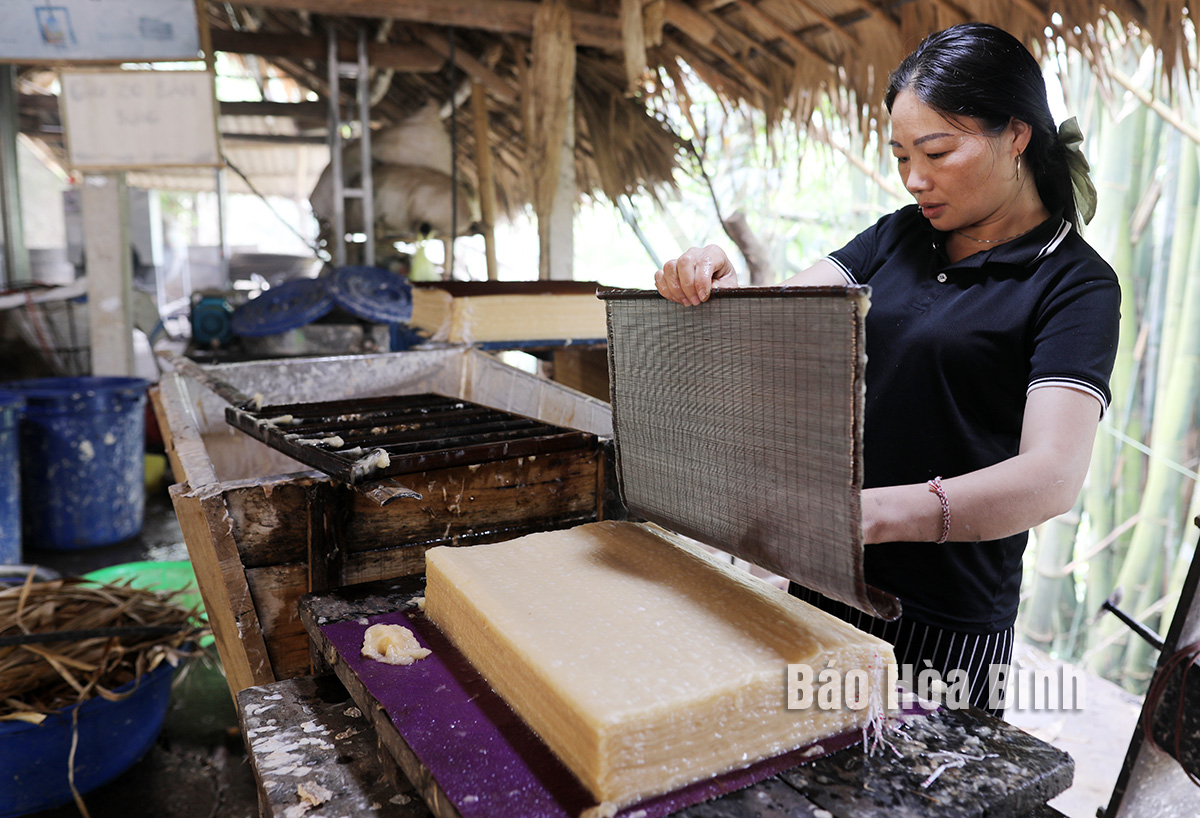



Ly Sao Mai, head of the do paper production group in Sung hamlet demonstrates the filtering and mold-casting processes involved in crafting the handmade paper.
Elder artisan Ly Van Henh said the Dao Tien people have long used do paper to record sacred texts, folk songs, genealogies, and other cultural documents. Written in ancient Nom Dao script and passed down through generations, these materials help preserve the community’s rich store of folklore and ancestral knowledge. In Dao spiritual life, do paper is indispensable for key rituals such as the coming of age ceremony (cap sac), funerals, weddings, and grave-visiting traditions (Thanh minh). For the Dao people, it embodies the spiritual essence of their ancestors and serves as a bridge to their roots. Without do paper, sacred books and authentic ceremonies would disappear, along with a crucial part of the community’s cultural memory.
The do paper produced in Sung hamlet is entirely handmade. Its primary material is the bark of the do tree, which grows wild in local forests. Known for its thick, fibrous texture, the bark is soaked in limewater for at least three months, then finely pounded or ground, filtered, poured into molds, pressed, and sun-dried.
Each stage of production demands precision and skilled craftsmanship. As no chemicals are used, the paper remains acid-free, making it exceptionally durable, capable of lasting for centuries without fading or ink smudging. The final product is soft, smooth, resilient, and absorbent, making it ideal for calligraphy, traditional painting, and artisanal printing.
There was a time when the do papermaking craft in Sung hamlet teetered on the brink of extinction. Locals had begun cutting down do trees for firewood or using them as animal feed, and only a few households continued the practice, mainly for religious purposes.
Thanks to the support of local authorities, community organisations, and the community-based tourism network, the craft has been gradually revived and expanded. Residents receive technical training, equipment, raw materials, and market access support.
Previously, only a few households practiced the craft, said Ly Sao Mai. Now, her production group also creates creative products such as notebooks, postcards, lanterns, and earrings for tourists. Young people are now taking an interest in learning and preserving the craft. Her group now consists of dozens of members with stable incomes. The products are distributed in markets in Hanoi, Bac Ninh, and other localities.
A standout feature of Sung hamlet is the integration of do papermaking into community tourism. Visitors can experience the craft firsthand, trying their hand at various production steps, creating paintings, or practicing calligraphy on do paper, offering a rich and creative cultural immersion.
In today’s fast-paced industrial era, where traditional values risk being lost, the preservation and revitalisation of the do papermaking craft is not merely a cultural act. For the residents of Sung hamlet, it is a way to affirm their cultural identity, while laying the foundation for sustainable economic and tourism development rooted in tradition.